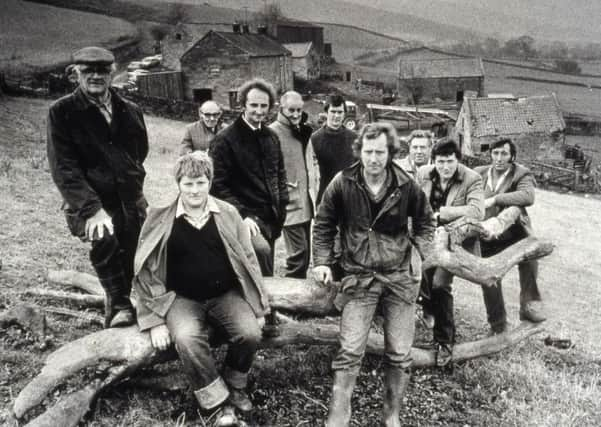Uncertain future for green projects


The last agreement in the North York Moors National Park’s Farm Scheme has concluded, bringing to a close an initiative that has had a vast impact on maintaining the splendour of the area’s landscapes and its abundant wildlife.
While the majority of the farms involved in the project have now been transferred to Natural England’s multi-tiered environmental stewardship schemes, there is uncertainty over how such vital work will continue to be delivered.
Advertisement
Hide AdAdvertisement
Hide AdAs part of the newly revised Common Agricultural Policy (CAP), the Department for Environment, Food and Rural Affairs (DEFRA) is drawing up a new agri-environment scheme to replace the current stewardship model - but the lack of detail as to how this will be targeted has left national park chiefs uncomfortable.
DEFRA say details of the new scheme, which is due to begin at the start of 2015, will be published early next month.
Simon Wightman, head of natural environment at the North Yorks Moors National Park Authority, said: “We have concerns largely around the detail of the new agri-environment scheme. There is no detail on how it will be targeted. It is critical we get the detail right to deliver the benefits we need.”
The now-closed Moors Farm Scheme took a “whole farm approach” and regarded the landscape, wildlife and recreation value of a farmer’s land as an income asset in the same way as food production.
Advertisement
Hide AdAdvertisement
Hide AdIt was far-sighted and had a significant influence on the development of agri-environment policy in England and Wales, national park bosses said, and was used as an example of best practice for stewardship schemes.
David Renwick, director of conservation at the Moors National Park Authority, said: “Its achievements are there for all to see on the ground in the North York Moors - Farndale for example, owes much of its unspoilt beauty to the scheme. But what it also brought is a good working relationship between the National Park and those who farm here. This is an important legacy and one we will do our utmost to maintain.”
Mark Carter of Overend Farm in Rosedale near Kirkbymoorside, North Yorkshire, was in the scheme for 20 years and said it had a transformative effect.
“When we bought 60 acres of neighbouring land that was in a bad state of affairs, grants from the Farm Scheme enabled us to build and repair walls and fences to make the land sheep and cattle proof. It’s enabled us to expand our business and looks really good now. I hope that funding continues for maintaining walls, hedges and the like.”
Advertisement
Hide AdAdvertisement
Hide AdDEFRA has pledged that environmental work will continue to be supported, with more of the UK’s CAP budget being dedicated to the environment than before. More than £3bn is expected to be allocated to environmental improvements over the next six years, compared to around £2.9bn over the last six years, a DEFRA spokesperson said.
Mr Wightman said central support to build on the success of the Moors Farm Scheme was essential, not least because the National Park Authority’s budget remains tight.
“We do have less funding within the National Park Authority - going forward it faces an uncertain financial future - but it is recognised by our members the importance of the availability to have grant programmes in place.
“I think Natural England has taken a big hit in terms of budget cuts. Having said that there is a role for National Park Authority staff to work with Natural England and DEFRA staff to hopefully see that the new scheme is properly targeted.”